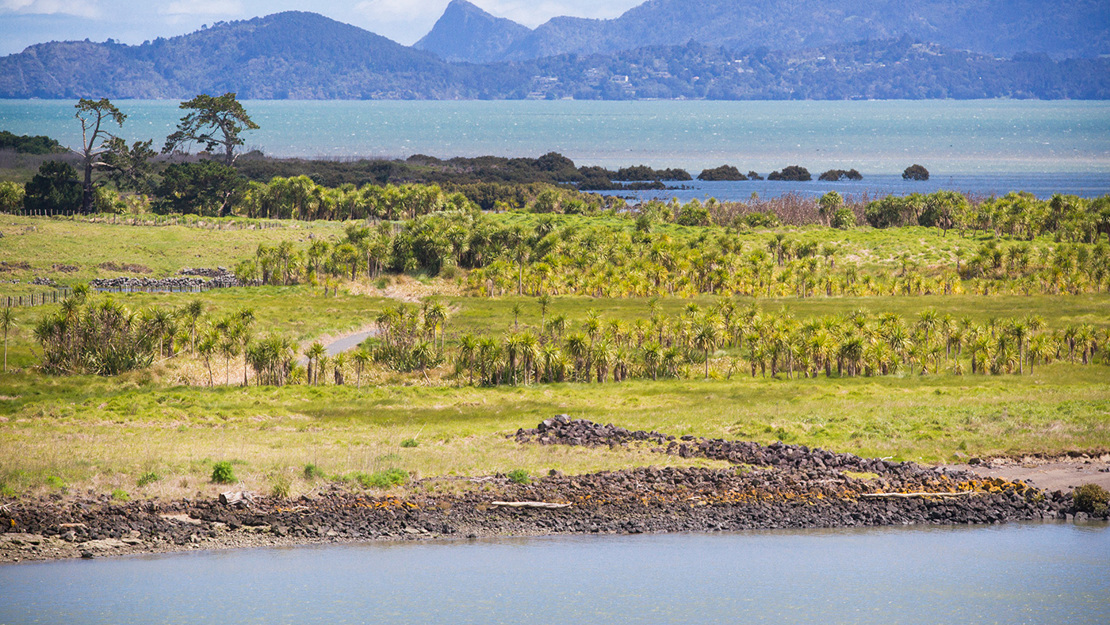Ōtuataua
Size: 109 hectares
Site description
The Ōtuataua biodiversity focus area includes an historic reserve and wāhi tapu site (sacred place) on the Ihumātao Peninsula.
Ōtuataua Stonefields Historic Reserve preserves a unique and nationally significant archaeological and cultural heritage area; a threatened plant population; small remnants of a regionally threatened native forest ecosystem type; and the remnants of two small volcanoes - Ōtuataua and Puketāpapa. For Te Wai-o-Hua, mana whenua it is a taonga (treasure).
The Ōtuataua lava flows are recognised as an Outstanding Natural Feature in the Auckland Unitary Plan.
Situated in the upper reaches of the Manukau Harbour, Ōtuataua is approximately three kilometres north-east of Auckland International Airport.

Key ecosystems
There are three small remnants of volcanic rock forest (WF7.2) within this biodiversity focus area. Rock forest is considered to be critically endangered in Tāmaki Makaurau / Auckland.
Pōhutukawa occurs near the shore and other dominant trees include tītoki, karaka, pūriri, porokaiwhiri (pigeonwood), ngaio and māhoe.
A good variety of native ferns also grow within the forest and on the rocks.
Native fauna
Native birds found within the reserve include:
- pīwakawaka (fantail)
- tūī
- kererū
- tauhou (silvereye).
The vegetation and volcanic rocks within the reserve also support at least two species of native lizard.
The intertidal flats, saltmarsh and mangrove scrub (SA1) along the coastal edge of the reserve provide significant habitat for shorebirds including:
- tōrea (South Island pied oystercatcher)
- kuaka (bar-tailed godwit)
- huahou (red knots).



